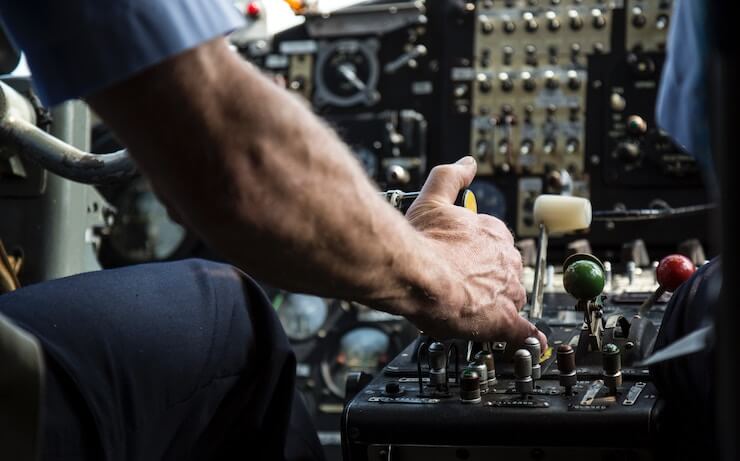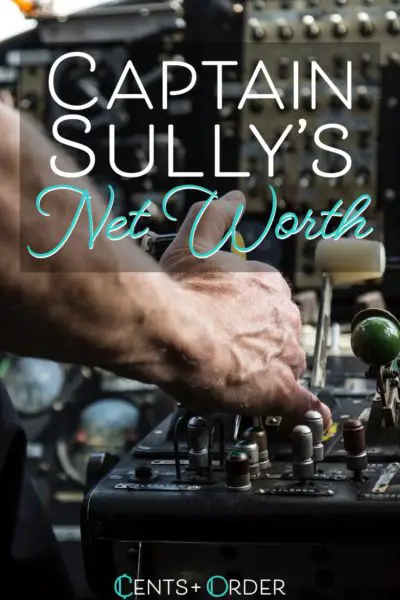Do you remember Chesley Sullenberger? You probably know him by his “stage” name, Captain Sully. On January 15, 2009, Captain Sully successfully saved 155 passengers and crew members on US Airways Flight 1549 that day.
The Airbus A320-214 struck a large flock of Canadian Geese shortly after takeoff. Both engines were quickly incapacitated by the large flock of birds. Silence filled the air in the plane as Captain Sully and his co-pilot, Jeffrey Skiles, planned their next move.
The plane was just 4.5 miles out from LaGuardia airport where it had taken off from. After working fervently to get the engines restarted, the crew realized they wouldn’t make the trek back to LaGuardia.
They had no choice but to land in the Hudson River, and that on a cold January winter day.
Table of Contents
Chesley Sullenberger’s Life and Experience
Chesley Burnett “Sully” Sullenberger was born on January 23, 1951 in Denison, Texas. Sully was a good student who had an interest in planes starting at a very young age.
He started building model planes in childhood, and would often watch the planes take off from the military base near his home. He consistently scored in the 99th percentile academically in every educational category.
After graduating from Denison High School in 1969, Sully was accepted to the United States Air Force Academy. He graduated four years later, having earned an Outstanding Cadet in Airmanship award along with his Bachelor of Science degree.
From there, the Air Force sent him to Purdue University to earn a Master’s Degree. After that, Sully entered the Air Force’s Undergraduate Pilot Training program. He officially earned his wings in 1975.
He spent five more years with the Air Force, both in training and as a fighter pilot varying Tactical Fighter Squadrons.
In 1980, Sully started flying for US Airways. He would continue to fly with the same company for the next thirty years.
During that time and in the years since, Sullenberger has acted in many additional capacities as a trainer and as a consultant in the airline industry. He even worked as an accident investigator for the National Transportation Safety Board (NTSB) inquiry into a major accident at Los Angeles International Airport.
His work there led to improved airline procedures and training for emergency evacuations of aircraft.
The Fate of Flight 1549
When Flight 1549 lost both engines on January 15, 2009, Sullenberger kept calm and did what needed to be done. Having no other viable alternatives, he smoothly landed the large plan on the Hudson River.
Sully had made a “mayday” radio distress call ahead of time, warning the air traffic controllers of his plan. They had suggested other nearby landing options, however Sully knew that the plane wouldn’t make it.
The plane passed over the George Washington Bridge – less than 900 feet above it – before landing in the Hudson River. In the meantime, air traffic controllers had asked the Coast Guard to caution boats in the area of the problem.
The Coast Guard also helped, asking the surrounding boats to help participate in the rescue. After the plane landed, Captain Sully began ordering evacuations through the plane’s four overwing window exits.
Crew members had deployed an inflatable air raft with a slide out the right front passenger door. Simultaneously, a panicked passenger kicked open a rear door, letting water into the plane.
Water also entered the plane through a hole in the fuselage and through cargo doors that had come open.
One by one, passengers exited out the designated passenger door and slid to the raft. Other passengers jumped into the freezing water and swam to nearby boats.
The temperature in the water was tested at 19 degrees Fahrenheit. And the air temperature in New York that day was 41 degrees Fahrenheit. However, some passengers felt the icy water was a lesser risk than staying with a plane they feared would explode.
Captain Sully was the last person off the plane, checking it twice for additional passengers before exiting.
Subsequent NTSB Investigation
After the crash, the National Transportation Safety Board conducted an investigation of the accident. There had been some question about whether or not the pilots could have returned to LaGuardia.
Or whether they could have landed at another nearby airport, Teterboro. Using flight simulation, the board recreated 13 simulator attempts to return to LaGuardia. They also attempted two landings at Teterboro using flight simulators.
Only of the two simulator scenarios attempting to land the damaged plane at Teterboro made it. Seven of the thirteen tested to return to LaGuardia succeeded. An additional simulation with time delayed by 35 seconds to account for pilot assessment of the situation, crashed.
The NTSB further found that the flight simulations of the accident weren’t entirely accurate. They didn’t account for real world considerations such as time for pilot assessment of the situation.
In Sullenberger’s testimony before the NTSB, he maintained that attempting to bring the plane to any airport would have failed. There was simply no time, and in his professional opinion an attempt to do so would have resulted in casualties both on the plane and on the ground.
At the end of the investigation, the NTSB agreed with Sullenberger. They reasoned that the checklist for dual engine failure was intended for planes flying at cruising altitude. However, since Flight 1549 had barely taken off, there was little time to consider other options.
The Most Successful Crash in Aviation History
An NTSB board member would later call the incident “the most successful crash……in aviation history”.
Sullenberger’s cool, calm and collected demeanor most surely played a large part in the “successful” crash. “Cool, calm and collected” is how most people that know Sully describe him.
He’s said to be quiet and humble. No more evident is this description of him as in the telling of his phone call to his wife after the accident.
When Sullenberger got ashore, he called his wife immediately, telling her “There’s been an accident, darling.” Only later, on the evening news, would she find out the true extent of her husband’s bravery.
Awards and Accolades
All said and done, authorities and civilians alike recognized that the exemplary behavior of Sully and the rest of the crew was what saved all 155 lives that day.
The crew was praised by New York City mayor Michael Bloomberg, as well as the state’s Governor, David Paterson. The entire crew would later be awarded with Keys to the City.
Then-president George W. Bush praised the crew as well as emergency responders. President-elect Barack Obama invited the crew to his January 2009 inauguration.
In 2009, the Guild of Air Pilots and Air Navigators awarded the crew of Flight 1549 a Master’s Medal. The Master’s Medal is a rarely-awarded distinction for outstanding aviation achievements.
On February 1, 2009, the crew received a standing ovation at Superbowl XLIII. Sullenberger also threw out the first pitch at the 2009 Major League Baseball season for the San Francisco Giants.
Just one year later, on March 3, 2010, Charles Sullenberger retired from his 30-year career as a commercial pilot.
In 2013, the entire crew of Flight 1549 was inducted into the San Diego Air and Space Museum’s International Air and Space Hall of Fame – a reward well-deserved.
Three years later, in 2016, “Sully” was released in theaters. The feature film drama starred Tom Hanks as Sullenberger and Aaron Eckhart as Jeffrey Skiles, Sullenberger’s co-pilot on the flight.
The movie did fairly well at the box office, with worldwide gross earnings of $238 million. Adaptation for the film was based off of Sullenberger’s book, Highest Duty: My Search for What Really Matters.
The memoir, written by Sullenberger and Jeffrey Zaslow, gets a 4.7 (out of 5 stars) by readers on Amazon. Reviewers call it the quintessential “feel good” book.
Chesley Sullenberger Net Worth
Chesley “Sully” Sullenberger has a net worth today of about 2 million dollars. He earned this money from a variety of sources as described below.
Summary
Today, Chesley Sullenberger works as an aviation and safety expert for CBS News. He also released a second book in 2013. It’s called Making A Difference: Stories of Vision and Courage from America’s Leaders.
The book explores what it takes to lead and inspire others. This read is highly rated on Amazon as well, receiving 4.6 out of 5 stars on Amazon. Sully also works as a suicide prevention activist and spends his retired days with his wife, children, and loved ones.
He’s been asked to run for public office, but the former pilot has no current desire to join the political arena.
You might be interested to know he did appear in Fox’s 2020 series, Duncanville. Maybe he’ll start working regularly as an actor in the animation world.
There aren’t many heroes like Chesley Sullenberger in today’s world. In a world where it’s so easy to be selfish, Sully shows us that there’s still a place for serving others.
Chesley Sullenberger teaches us that even everyday people like you and me can inspire others. You don’t have to be a rock star or a famous actor to make a big difference in the world.
Simply think big picture. Look for ways you can help others as you go about your day. Sometimes holding a door open, paying a stranger’s tab or giving a simple “thank you” is all it takes.
Did you see the movie, Sully? Or have you read either of Sullenberger’s books? If so, what did you think? Did you find them inspirational? What did you think about Captain Sully’s net worth? Share your thoughts in the comments section.



Agreed!!
I saw the movie and thought it was great. I think he should’ve got some of the proceeds from the movie, like several million👍🏽👍🏽
His net worth is irrelevant. What’s important is that he and his co pilot that day were the best two people any airline could have hoped to have in the cockpit. Its not that any other crew couldn’t have done what they did, but “ditching” is seldom successful. I believe Sully’s experience throughout his flying career played a huge part in the outcome, including his being a glider pilot. A wingtip in the Hudson and this would have turned out differently. He and the entire crew did a magnificent job in a life or death situation with no time to spare. I read his first book and saw “Sully” when the movie came out. I have nothing but total respect for this man and what he accomplished that day. If I remember, I sent US Air a message saying so.